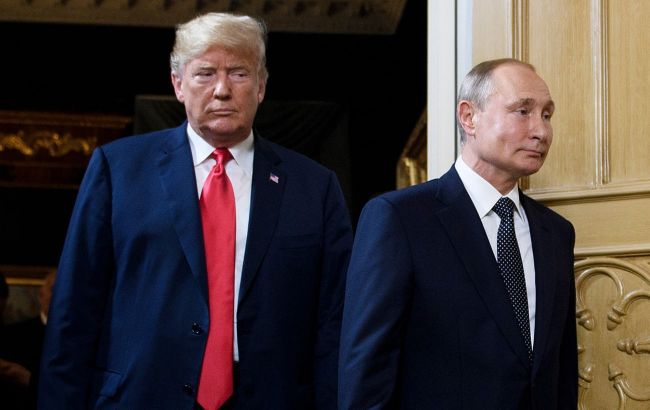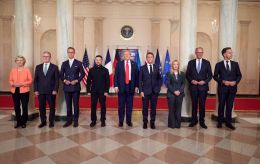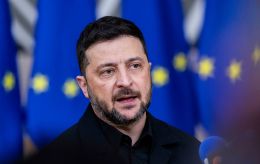Why Witkoff showed up in Moscow, Trump's behind-the-scenes plan, and the Kremlin's current headache
 Photo: Donald Trump and Vladimir Putin (Getty Images)
Photo: Donald Trump and Vladimir Putin (Getty Images)
US President Donald Trump has changed his rhetoric on the war in Ukraine, prompting cautious optimism about a possible ceasefire. After talks with special envoy Steve Witkoff, Moscow began a search for compromises, particularly concerning territories, according to the article Trump draws a line on Ukraine: What it means for Putin and the war.
According to informed sources of RBC-Ukraine, a certain optimism about a possible ceasefire is linked to the change in the position of US President Donald Trump regarding Russia’s war against Ukraine.
A shift in his rhetoric can be traced back to the beginning of July. This coincided with the end of the 12-day war between Israel and Iran, which was defused after Trump’s intervention.
On July 3, Trump had a phone call with Putin, discussing the war in Ukraine. After the call, the head of the White House stated that he was disappointed with Putin's stance and had achieved no progress.
That same night, Russia attacked Kyiv with a record number of drones and missiles. The next day, Trump spoke with Ukrainian President Volodymyr Zelenskyy. Sources describe this conversation as more positive than ever before.
After that, critical rhetoric toward Putin and Russia from Trump and his team intensified. Statements about transferring or selling weapons and air defense systems to Ukraine began to appear more frequently. Then the US president initiated economic pressure on Moscow through its partners.
According to Fedir Venislavskyi, a member of the parliamentary committee on national security, defense, and intelligence, Trump, initially referring to a 50-day deadline and then a new one that expires today, combined all of this into a single strategy.
“On one hand, they're meant to signal to Putin that we're gradually increasing the heat under your pot. Whether you like it or not, we will keep turning it up unless you move toward us," Venislavskyi told RBC-Ukraine.
The first target of the American leader’s tariff pressure became India, the second-largest importer of Russian oil after China.
Sources suggest that Moscow did not take Trump’s sanctions intentions seriously until the very end. This was partly because the US president had repeatedly given reasons for skepticism, citing different deadlines — from “two to three weeks” to “a hundred days.”
That is why the main task of Trump’s special envoy, Steve Witkoff, during his visit to Moscow, was to convince Putin of the seriousness of the intentions.
According to sources, as of August 5, Witkoff’s visit to the Kremlin was still in question — Putin had not confirmed the meeting. But the next day, it did take place. Details of the negotiations were not disclosed. Trump described them as very productive and bringing significant progress, although he acknowledged that it was not a breakthrough.
“After meeting with Witkoff, they really faced a dilemma and are now looking for a solution. Primarily regarding territory - what they can give up, where they can make concessions. After the meeting, Russia's Security Council met for six hours. Today (August 7 – ed.) - for another five,” one informed source told RBC-Ukraine.
The main public outcome of these talks was the planning of a personal meeting between Trump and Putin. The last time they met was in 2021, before Russia’s full-scale invasion of Ukraine.
According to political analyst Abbas Gallyamov, there is probably no concrete agreement regarding this meeting. As Trump simultaneously sends positive signals that the negotiations were constructive, while continuing to impose sanctions, raising tariffs against India.
“He (Trump - ed.) is not ruling out any scenario. He's just trying to make it easier for Putin to move in the right direction," the political analyst said in a comment to RBC-Ukraine.
About Witkoff’s visit, peace talks, and preparations for the Trump-Putin meeting
Ahead of the deadline (which expires today, July 8) set by Trump for the Kremlin to begin real peace negotiations on Ukraine, diplomatic activity significantly intensified.
On August 6, Steve Witkoff, the special envoy of the US president, visited Moscow. His talks with Putin lasted about three hours. Both sides assessed the dialogue positively afterward.
Immediately after these negotiations, Trump held a phone call with Zelenskyy, as well as with several European leaders. During the call, the US president announced his intention to personally meet with Putin soon. According to media reports, he then plans to hold a trilateral summit with Zelenskyy also in attendance.
According to CNN, Trump instructed his team to urgently prepare for the meetings. The Kremlin, in turn, stated that the agreement on a meeting with Trump was allegedly “already reached, and the location will be announced later.”
After the talks in Moscow, US Secretary of State Marco Rubio said that it had become clearer under what conditions Russia might agree to end the war. According to him, the main issue will be territories.
The US notes that a ceasefire will be a necessary stage for further negotiations, since conducting peace talks amid active hostilities is extremely difficult.
Meanwhile, the president of Ukraine said that he continues active diplomatic contacts, including with European leaders, to achieve real and lasting peace.

